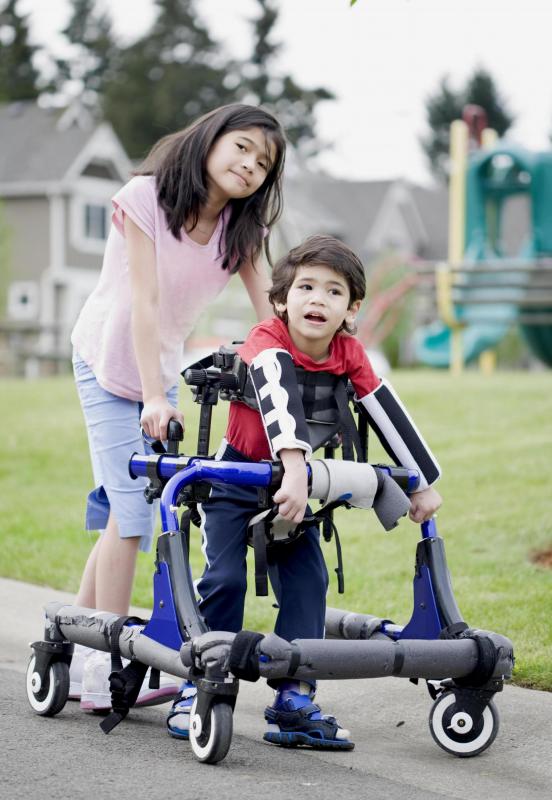At WiseGEEK, we're committed to delivering accurate, trustworthy information. Our expert-authored content is rigorously fact-checked and sourced from credible authorities. Discover how we uphold the highest standards in providing you with reliable knowledge.
What can Cause Cerebral Palsy at Birth?
The development of cerebral palsy at birth occurs when something interrupts the oxygen supply during the birthing process, or an infection develops during birth. Oxygen deprivation may occur if labor fails to progress quickly enough, leaving the child in the birth canal during labor. Infection may develop if the mother's water breaks and she does not deliver within 24 hours.
Developing cerebral palsy at birth is less common than the infant developing it in utero or after birth. Roughly 70 percent of cerebral palsy cases occur during the pregnancy, from conditions such as an infection in the mother that crosses to the child, Rh incompatibility, insufficient oxygen reaching the baby because of problems with the placenta, or premature birth. Approximately 20 percent of cases of cerebral palsy develop after birth due to infection in the brain, such as meningitis, or brain injury due to abuse or accidents. The remaining 10 percent of cases develop cerebral palsy at birth.

There are no particular risk factors during childbirth that may indicate a baby will develop cerebral palsy at birth. Complications such as the umbilical cord around the neck are common enough for doctors to have established there is no direct correlation between these problems and a later diagnosis of cerebral palsy. In fact, roughly 60 percent of pregnancies include at least one complication, and the majority of these cases resolve without further issues.

An indicator of cerebral palsy, however, appears to be the Apgar score given 20 minutes after birth. Newborns with an Apgar score of three, 20 minutes after birth have a risk of developing cerebral palsy that is 250 times greater than normal. Babies with such a low Apgar score will likely have suffered severe oxygen deprivation during the birth process. Of the babies in this high risk group, one half will develop cerebral palsy.
Cerebral palsy is the name for a group of conditions that disrupt the body's ability to control movement. Cerebral palsy is not a progressive disease. Symptoms can be mild to severe, and with therapy and treatment, the condition can be improved.

There are three different forms of cerebral palsy, ataxic, athetoid, and spastic. In ataxic cerebral palsy, the individual experiences problems with balance and perception. Individuals with athetoid cerebral palsy experience uncontrollable muscle movement. Those with spastic cerebral palsy experience difficulty moving and extreme stiffness. Individuals with cerebral palsy may also experience learning disabilities, mental impairment, epilepsy, and attention deficit hyperactivity disorder.
AS FEATURED ON:
AS FEATURED ON:














Discussion Comments
Thank you. You have cleared up the questions unanswered by various doctors.
Post your comments